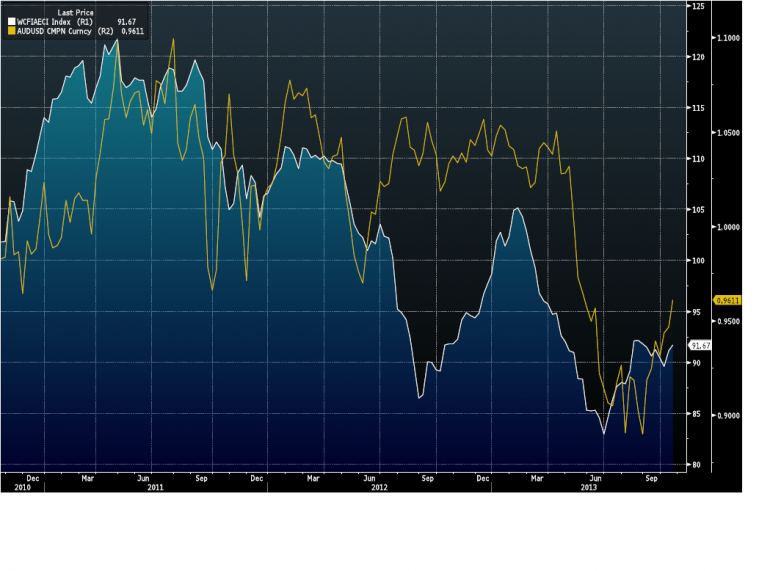Why the Aussie has wings
The Aussie dollar is climbing to four-month highs, spurred on by a consensus view that quantitative easing is going to continue in its current form, combined with improving exports to China.
Moves in the currency market are based on the view there will be no tapering until early next year, which is driving the Australian dollar higher, according to Joel Murphy from Pepperstone Financial. The currency is also supported by improving data from China, with GDP coming in at 7.8 per cent for the third quarter.
China ran its iron ore stockpiles down to drastically low levels, leading record imports of the red dust during the month of September. A similar story is unfolding for the coal market, with reports coal stockpiles are in decline at both port and power plants.
Low inventories in China are set to ramp up demand for coal, hopefully encouraging the price to climb higher after the commodity closed on its worst quarter in four years. While a coal surplus is set to saturate the market for some time yet, it is estimated to max out at 14 tonnes, or around 1.4 per cent of global seaborne supply.
The relationship between commodity prices and total exports is relevant – last year, iron ore and coal combined to account for 62 per cent of Australia’s export value to China. Evidently, what gets exported to China contributes to the level of the Australian dollar.
As the three-year graph below explains the commodity index (white line) is closely matched with the Australian dollar exchange rate versus the US dollar (yellow line).

The strength shown in the currency relative to the commodity export index from June of last year through to March was a result of high domestic interest rates compared with the developed world and the expectation at that time quantitative easing would continue in its current form.
Over the past three years, this is the only period where the monetary policy of the US has caused the domestic currency to trade independently of the export index. While it is entirely plausible this could happen again, all of the data, from both the US and China is suggesting the historical relationship is back for the rest of the year at least.
While our dollar looks comfortable at current levels, volatility in the currency market isn’t going to abate anytime soon keeping the Reserve Bank of Australia on its toes when it comes to offering exchange rate guidance. Volatility will likely ramp up in the weeks ahead as data coming from the US has the potential to be inaccurate as a result of the US government shutdown. However in the absence of any tapering talk, it doesn’t look like the Australian dollar will permanently find lower ground.
















